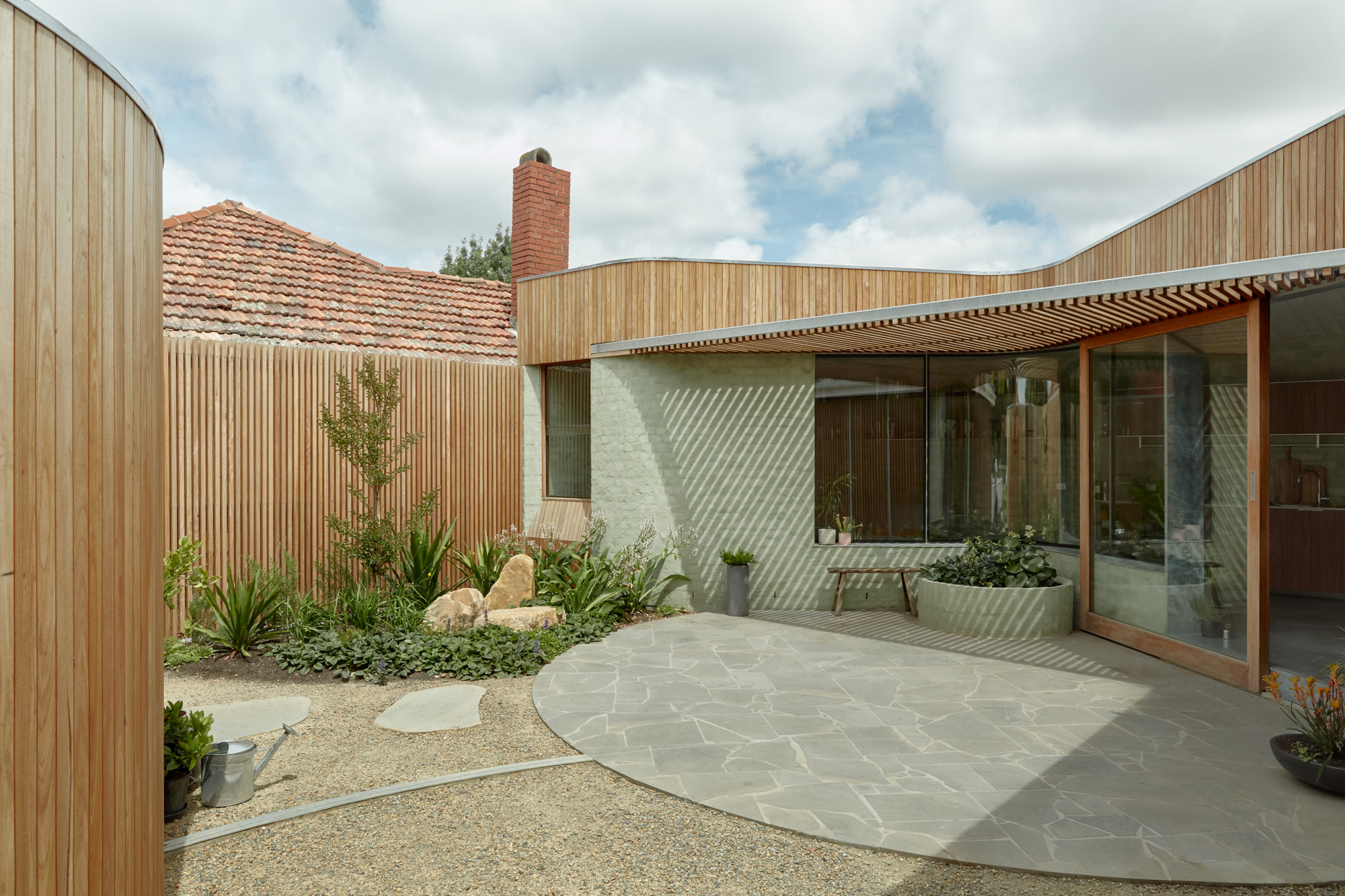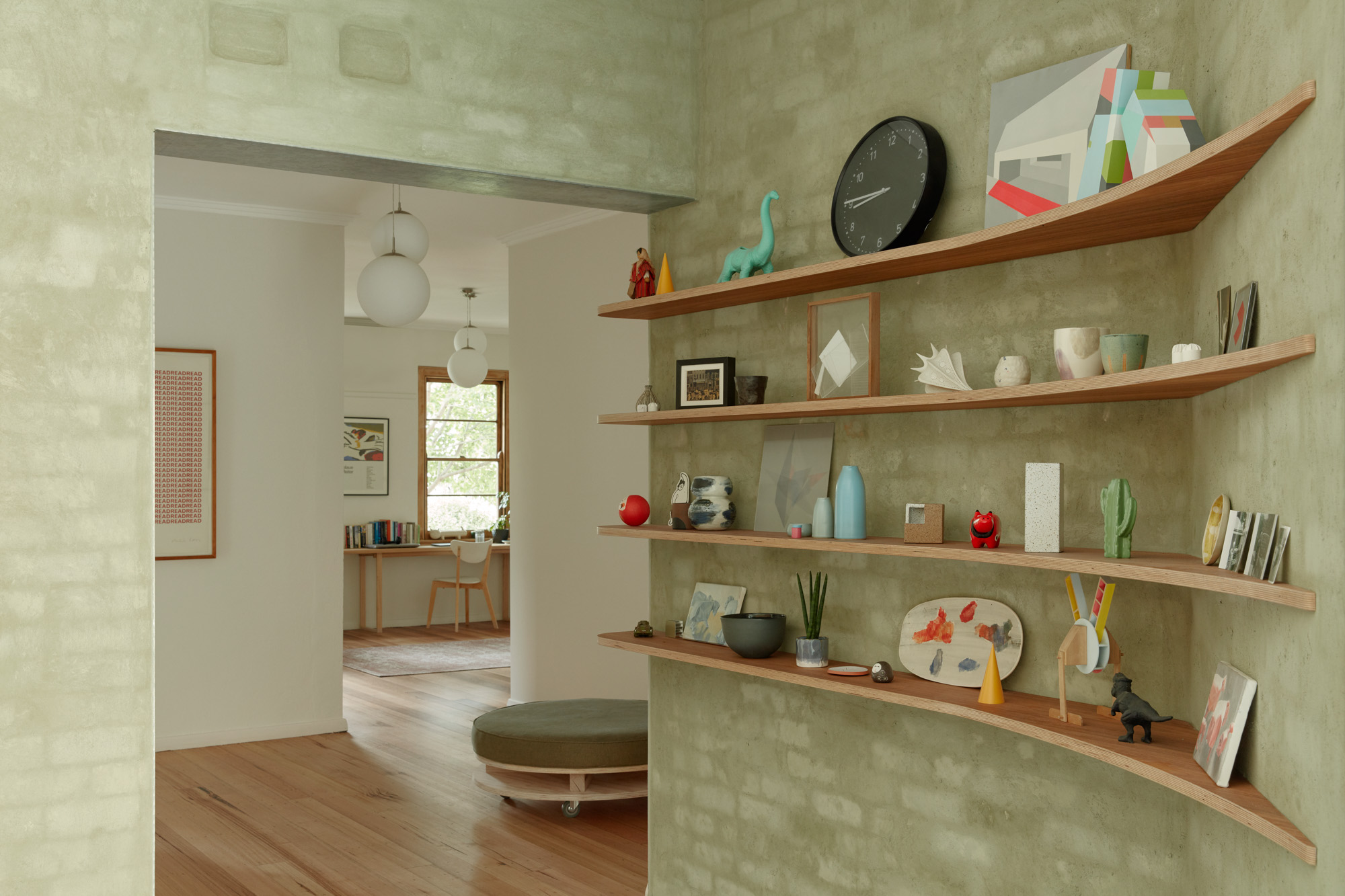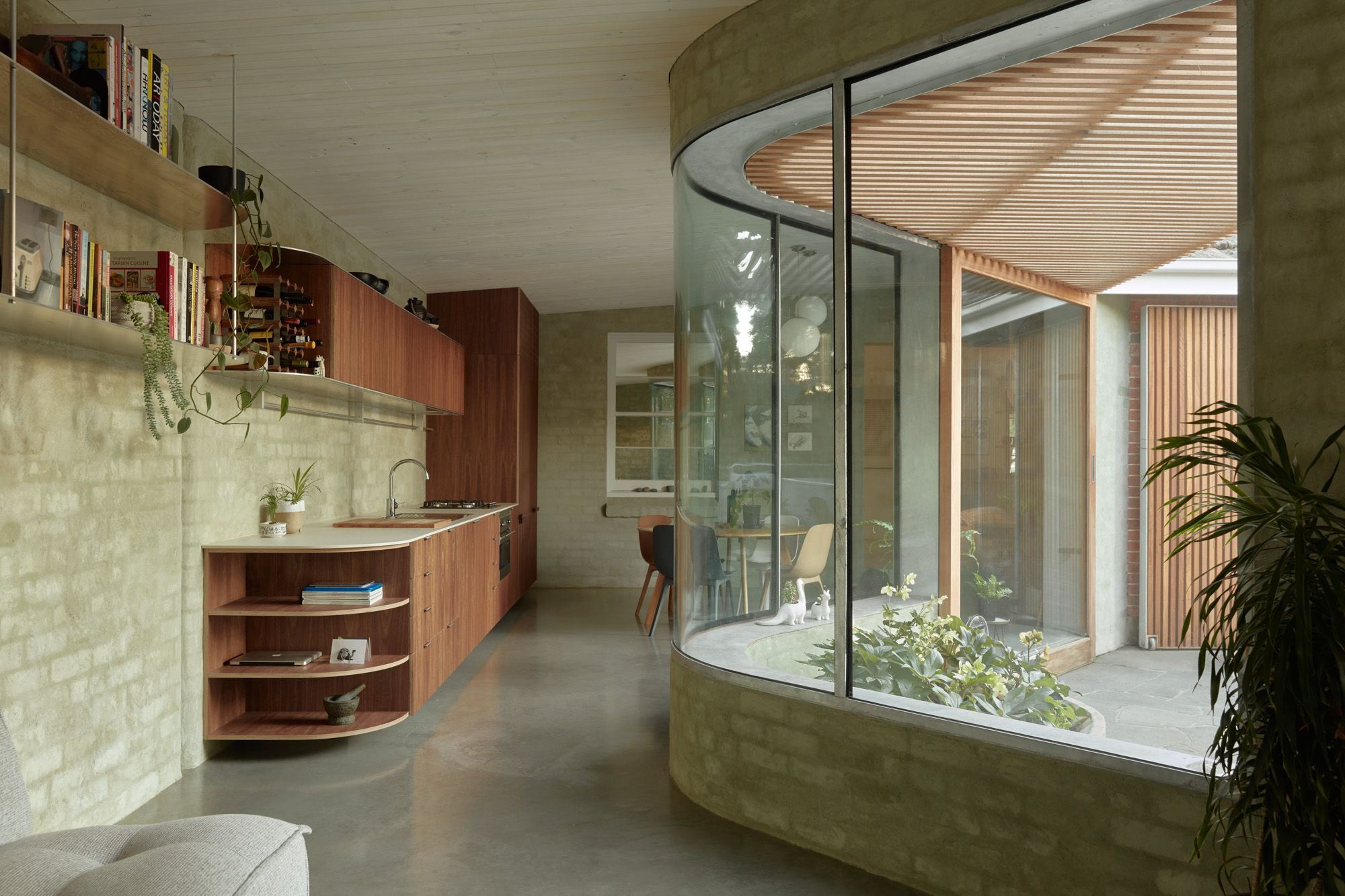Heritage Listing: Heritage Overlay
Park Life is part of the Champion Road Estate Heritage Precinct, a largely intact 1940s housing estate. Park Life draws its design impetus from Garden City principles that underpin the estate, and interprets these in inventive ways. The new work supports the property’s contribution to the value of the precinct, while enhancing the amenity of the house and garden through a set of delightful additions and alterations.
Download a printable version of the Park Life Case Study (PDF 5MB).
Significance of the place
The significance and value of this property is intimately entwined with its suburban context, the Champion Road Estate Heritage Precinct in Williamstown North. Built by the Housing Commission of Victoria between 1941 and 1945, Champion Road is an early example of a model housing estate based in Garden City planning principles. Small yet substantial semi-detached brick houses are set back from the street, behind very wide nature strips, with fences minimised, all to create a shared garden landscape. Today, as indicated in its statement of significance, the estate is valued for its “strong visual homogeneity” established through this consistent arrangement of similar houses on curving streets around a central park.
The estate was established to provide worker housing and was developed in response to criticism of the commission’s previous slum clearance programs, which had moved residents out of the area. Over half the original occupants of the Champion Road Estate were already from Williamstown, and for the first time residents also had the option to buy their homes.
The Champion Road Estate Heritage Precinct is now one of the most intact garden suburbs in Victoria, and is recognised for its historic, social and aesthetic significance. These values are embodied in the estate as a whole – an integrated arrangement of houses, gardens, public realm landscape and mature trees.
“The new living zones extend diagonally out from the existing house; walls flare, pinch and curve, sometimes stealing, sometimes surrendering space to the courtyard, ensuring both benefit from a sense of generosity.”
— ARCHITECTURE ARCHITECTURE
Opportunities
The renovation of this modest house and garden – located on a prominent corner site within the precinct – brought opportunities to improve amenity of the home, inside and out, and to enhance the contribution it makes to the established landscape. The Garden City context provided a meaningful conceptual framework for the design of the new work, as well as an attractive site. The renovation brought the chance to develop the house and yard in relation to the form and character of the precinct – and to improve the connection. The corner location amplified this potential. The two streetscapes are of different character – both are generously planted, but while the ‘front’ of the house faces onto a fairly typical nature strip, the ‘rear’ benefits from an extremely wide verge (as wide as the house itself). A high fence bound the existing backyard, so there was plenty of opportunity to reconnect the private garden and studio to the public landscape spaces of the estate.
“Nearly 12 months on from completion and we are still exploring and discovering nuances and subtleties of the spaces … the volumes, the materials, the textures, the palette and the light – as it changes throughout the day and throughout the year. We are sure that this will be a joy for many years to come.” — OWNERS
Challenges
A core challenge for the architects was to create a private garden space for the owners while also contributing to the generous park life of the heritage estate. The small site demanded inventive planning to ensure that the extension did not overtake the backyard. Internally, the house was in good condition, but rooms were small with dated amenity and poor connection to the outdoors by today’s standards.
Approach and outcome
The design approach draws on the ideals of the Garden City and on the form, materiality and landscape character of the heritage housing estate to create a contemporary addition, reinvigorate the existing house and establish a private garden. The new addition sits comfortably within the precinct – it retains the modest scale and reflects the robust materiality of the original worker’s house, while amplifying the idiosyncratic charm of the Garden City setting.
Fundamental to the success of the project is the consideration of the property as a whole – house, ancillary structures, gardens and nature strip. This means that the full site could be carefully planned and understood in relation to the client needs and the precinct, while differentiating the two streetscapes.
The ‘backyard’ was cleared of a pergola attached to the house, sheds that sat close to the site boundary and backyard fence. Removing this ‘clutter’ improved the relationship between the house and Park Crescent, with its very deep nature strip. It created space for a small new kitchen, dining and living extension and a separate artist’s studio. The studio is set back from the street to provide a more extensive street-edge garden while also sheltering the private landscaped courtyard. Services and water tanks were relocated to a service yard behind the studio.
Internally, the main rooms of the existing house have been reconfigured through subtle interventions. Removing two walls, adding one, and relocating the bathroom has created better internal flow while maintaining the original plan layout of the house and establishing a new diagonal axis. The extension flows out of the existing house and embraces the garden.
The curved form of the extension is designed to recede in relation to the heritage house. It also enables the new interior spaces and garden to be moulded and ‘pinched’ to create adequate space for both. Materials and colours were selected to resonate with the park-like setting. Brick, timber and concrete (burnished and green bagged) are all robust and tactile, and continue the sense of warmth and physicality.
The scale of the living spaces, new and old, is appropriately modest. But the outlook onto the garden and street, and the view across and between interior spaces, provide a sense of openness and generosity.
Lessons
- Clever planning of the whole block has created beautiful, functional new interior and garden spaces while maintaining the setting of the heritage house.
- Careful internal adjustments have improved the relationship between spaces without compromising the logic of the original plan.
- Material and colour choices connect the addition to the Garden City aesthetic values of the precinct.
Project Team
Original Architect: Housing Commission of Victoria, 1941–45
Architect: Architecture Architecture





